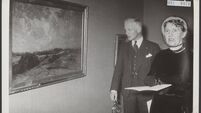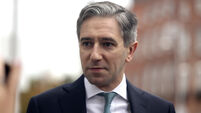Daniel McConnell: How Michael Collins and Éamon de Valera went from friends to rivals
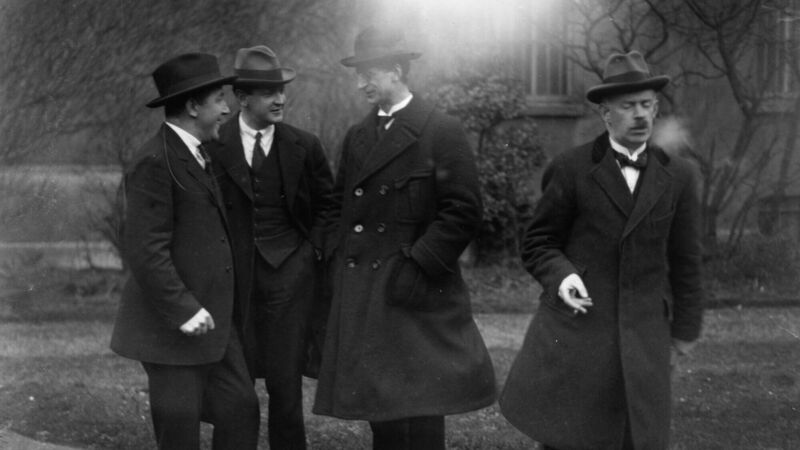
Members of the Sinn Fein Ard Fheis in 1922. From left to right: Harry Boland, Michael Collins, Eamon de Valera and Eamon Duggan. Picture: Walshe/Topical Press Agency/Getty Images
When friends become enemies, the consequences are devastating.
In 1922, Éamon de Valera and the mythic Michael Collins had opposing views of the Anglo-Irish Treaty and de Valera’s rivalry with Collins also seems to have played a significant role in leading Ireland to Civil War, historian Julia Walsh concluded in 2012.
The rivalry between Collins and de Valera has long been debated through the decades, with historians falling into the trap of demonising one of the two men and praising the other.
The truth is that the demise in the relationship between de Valera, the iconic leader of Irish republicanism and self-styled president of Ireland and Collins, the charismatic young military general was in train long before the Treaty was signed in Downing Street on December 6, 1921.
From the days of close cooperation between 1916 and 1919 when Collins helped de Valera escape from Lincoln Prison, by the time de Valera returned from the US, jealousy and tensions abound.
HISTORY HUB
If you are interested in this article then no doubt you will enjoy exploring the various history collections and content in our history hub. Check it out HERE and happy reading
On his return, de Valera asked how everything was going, and the response was, “Great! The Big Fellow is leading us and everything is marvellous.”
Dev’s apparent reply: “Big Fellow! Big! We’ll see who’s the Big Fellow...”
Tim Pat Coogan in his critical biography of de Valera set out three goals once home which included “asserting his ascendancy over colleagues…securing dominance over Collins in particular”.
de Valera appeared unsatisfied with how the country was being run, railed against Collins’s guerrilla war tactics and rounded on the young military leader after the terror of Bloody Sunday on November 21, 1920.
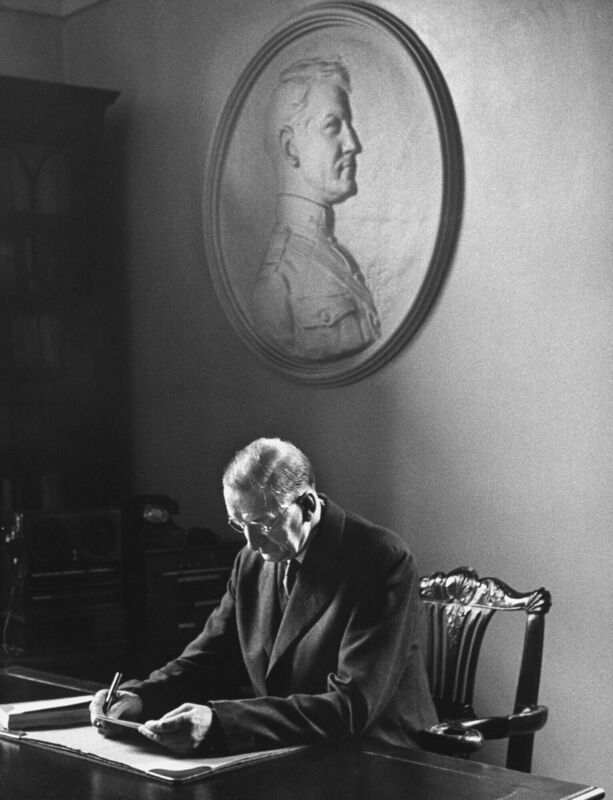
Following an appeal for conciliation from the King in Belfast, British prime minister David Lloyd George set about opening talks with de Valera and Northern Ireland premier James Craig to attempt to resolve the Irish question.
A truce was declared in Ireland on July 9, 1921 and de Valera agreed to travel to London to discuss a possible settlement.
To accompany him, de Valera selected Arthur Griffith, Robert Barton, Count Plunkett, and Erskine Childers — but not Collins. Collins felt snubbed given his leadership during the War of Independence which claimed the lives of 405 RIC officers, 150 military personnel and 750 IRA members and civilians, as reported by Edward Purdon in his book The Civil War 1922-1923, published in 2000.
When formal peace talks commenced in October, in probably his most-controversial decision, de Valera chose not to go to London, but insisted a reluctant Collins did.
The Boston Globe reported that “Poisoned relationships among the founding fathers of independent Ireland and made Civil War inevitable.
“de Valera, the senior figure of the revolution, could feel his power slipping away to Collins’s military and organisational brilliance.
“Knowing that all the revolutionaries’ aims could not be achieved, de Valera sent Collins to London instead of going himself so the military hero could be a scapegoat for the failure to negotiate a better deal.” As Walsh stated, the intense rivalry between the two men and discord in the Treaty process would “further drive these two prominent men apart”.
However, other historians have dismissed the scapegoat theory as too simplistic.
UCD historian Prof Diarmuid Ferriter in his 2007 book Judging Dev he said de Valera sent Collins and Griffith as to allow him to “avoid compromising the Republic and to be in a position uncontaminated by negotiation”. Whatever the truth, his decision not to go had widespread ramifications.
When the Anglo-Irish Treaty was formally signed on December 6, de Valera condemned it saying men like Collins who “three years ago declared in a most solemn manner their independence, now voluntary abandon their independence and the republican form of government which enshrined it”.
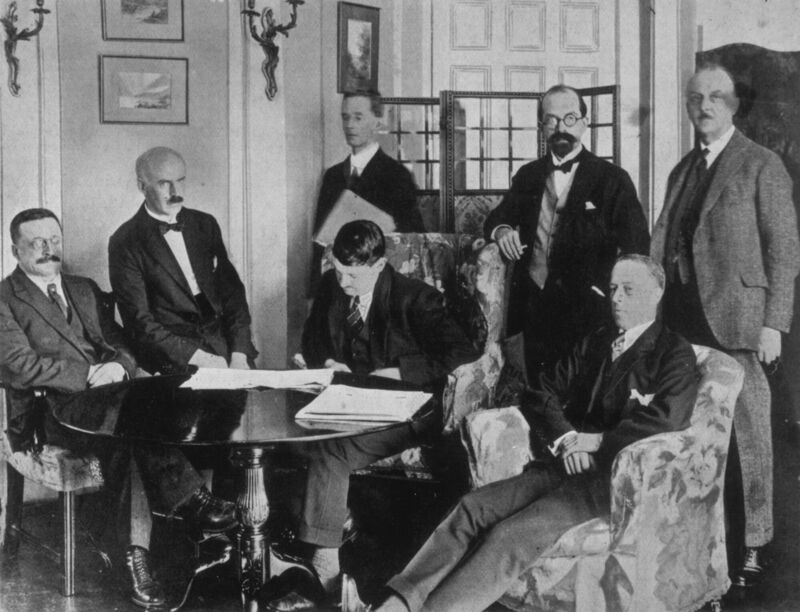
The treaty’s terms infuriated de Valera because they were not what he wanted at all. Additionally, he felt disrespected because he was not consulted before it was signed.
de Valera also accused Collins of keeping him in the dark on purpose and claimed he should have been consulted before they signed. Furthermore, he alleged that he did not hear about the treaty’s signing until the evening paper, a claim Walsh said it is hard to accept.
If Collins and de Valera had tension before the treaty, they certainly did by early 1922.
With the Sinn Féin movement now divided on the issue of the treaty and the country taking its first fragile steps of independence, the country drifted towards civil war.
Tensions between Collins and de Valera were heightened because, as according to Ferriter, Collins “consistently outclassed and outperformed de Valera... [His] determination to win any public opinion propaganda battles was evident very quickly”.
He worked tirelessly to revise the Treaty, especially the oath of allegiance and the “Ulster provisions” to make it somewhat more acceptable.
Another source of frustration is that while Collins’s standing only grew as the leader of the Free State Army, de Valera no longer president, had seen his influence decline.
In a desperate bid to avoid war, Collins, in another demonstration of loyalty to de Valera, attempted to work out some sort of arrangement.
“The rivals made an agreement called the Collins-de Valera pact, which would form a Cabinet of both pro- and anti-Treaty factions as well as a coalition government.
“However, two days before the June General Election, Collins denounced the pact. Part of his condemnation appears to have stemmed from his disputes with the British (who were disgusted with the agreement) about the Irish Constitution,” Walsh wrote.
By the time the Civil War began on June 28, 1922 when Collins ordered the shelling of the Four Courts, de Valera could not stand to accept the loss of his standing and importance and many on the anti-treaty side seemed it was entirely appropriate to ignore the wishes of the majority of the people who supported the treaty.
Even though they did not have majority support, for republicans the compromise that the treaty offered was completely unacceptable.
Collins and Griffith had signed the treaty and were seen to have compromise their Irish republican principles.
But they felt, the Treaty and its terms including the Oath of Allegiance was not what Pearse died for six years earlier. It was not the Republic so passionately fought for the war of independence by a united IRA.
The pledge of loyalty to the crown was not something that Republican activists could easily swallow, not after the sacrifices they have their colleagues had undergone.
As historian Michael Heaney concluded in 1998, what they couldn’t see was that the choice of a free state within the Commonwealth was for them virtually no choice at all. So it became war.
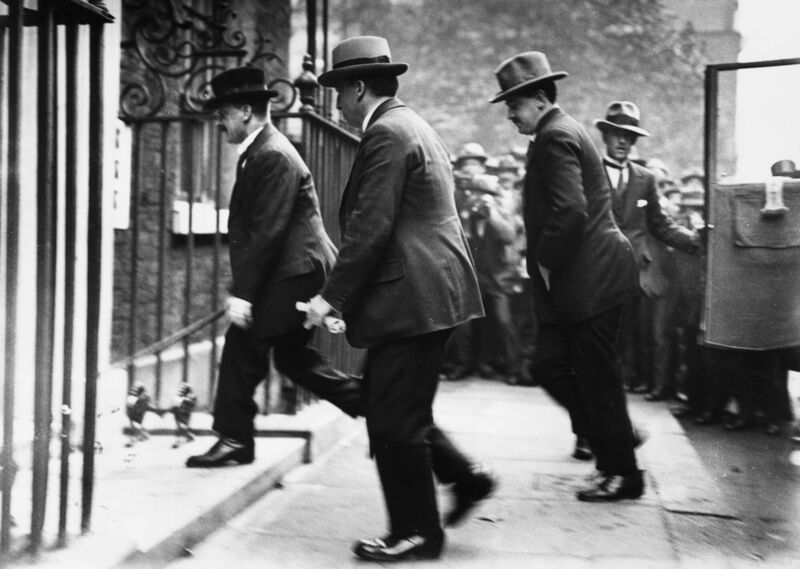
The destruction in Dublin would spread south and west over the following year as brother turned against brother, splitting the country “from top to bottom”.
Despite the tension, Collins and de Valera signed an election pact. The role of de Valera in the months between the treaty’s signing and Collins’ death in August 1922 came to dominate subsequent decades of Irish politics, and even today remains a matter of extreme disagreement.
Should and could he have stood more firmly against the drift to violence in 1922 and would it have made a difference had he done more.
Could he have not have chosen to stay in government and use the Treaty as Collins suggested as a stepping stone to real freedom.
His absence, particularly on issues like the boundary commission, was telling.
For de Valera, he was faced like other Irish Republican leaders before and since with a compromise.
But as Heaney asked, did he pay too high a price to avoid a split?
The extent to which his popularity could have arrested the decline into civil war remains a matter of strong debate in Ireland and across the world.
Many people, still ask the question — Did de Valera cause the civil war?
Some point to his hypocrisy in that he opposed Collins’s guerrilla tactics during the War of Independence only to encourage them now by urging IRA volunteers to be “wading through blood” of fellow Irish men to achieve the goal of the republic.
Or as others have said, did he take the only course open to him consistent with his Republican principles?
Even de Valera’s presence near Béal na Bláth at the time of Collins’s death fuelled conjecture that he did nothing to stop the ambush, or worse, encouraged the killing of his one-time friend and now main rival.
Dead at 31, Michael Collins was the pragmatic one, the Republican leader not unprepared to accept compromise, who died before he could see the compromise through.
A hundred years on from that tragedy, these two men, Collins and de Valera remain today as green icons of Irish politics.
They have come to represent choices faced by generations of Irish nationalists. The battle of ideology versus pragmatism and reality.

Unlimited access. Half the price.
Try unlimited access from only €1.50 a week
Already a subscriber? Sign in
CONNECT WITH US TODAY
Be the first to know the latest news and updates



